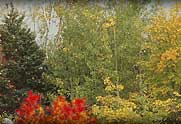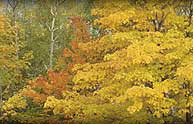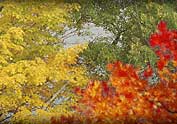Orioles In Your Backyard
The arrival of the orioles brings assurance that summer is truly on its way. Males usually arrive on the breeding grounds a few days ahead of the females. Once they’ve selected a territory, they sing continuously all day long. Here in New England, we can expect their arrival around the first week in May.
The Baltimore oriole nests throughout eastern North American and winters from the southern United States to northern South America. A similar species, the Bullock’s oriole, breeds in western North America and winter largely in Mexico and Central America.
Orioles build hanging nests that are five to six inches long. But they can be longer, with an opening at the top. These nests are typically lined with horsehair and fine grasses, are woven from plant fibers interspersed with horsehair, wool, and string. Baltimore nests are usually 25-30 feet off the ground, the Bullock’s tend to be 12-15 feet high. These nests can be seen easier in the fall, when the cover of leaves has disappeared.
We have found that customers who provide more than just one food source, on a regular basis, are more likely to retain the orioles in their backyards throughout the breeding seasons. Most people offer the standard oriole nectar in a standard feeder. In fact, some will use a hummingbird feeder, with oriole nectar. This works for the first few weeks during the arrival of orioles in April-May However, when natural food supplies begin to emerge, these same customers are the first to lose the orioles from the area.
Oranges work well, but can be expensive over time. Orioles can eat an orange in no time at all. We buy our oranges when on sale or are marked down when approaching the freshness date.
The best solution is to offer food sources that can not be found in the wild. In other words, you have to give the wild birds a good reason to leave the woods. Orange-based nectar is just one reason. A good, quality orange suet cake works wonders. If you can make a perching area on your standard square suet cage, they stay longer. We like using our real suet log and stick perches just below the suet holes. They adore it!
The greatest tip to keeping orioles is to serve grape jelly! That’s right, good old grape jelly. Don’t use jam, it is too chunky. The orioles will sip the jelly like it’s nectar. The sweetness is too good to pass up. We use over 4 jars of jelly in a given season. Stick with name brands. The private labels aren’t as sweet (maybe that’s why children prefer name brands in taste tests). You can use any cup or lid to smear the jelly onto. Other birds that adore the jelly include mockingbirds, robins, and even hummingbirds.
The best oriole feeders will accommodate three favorite foods in one location. nectar, oranges and grape jelly. We believe the best oriole feeder on the market is the first oriole feeder ever made. This basin style (or "flying saucer") was designed by an ornithologist. It allows you to serve orange nectar in a simple basin. It can’t leak because it’s one piece. You spike half an orange with the hanging brass rod, which holds it firmly in place. Grape jelly is placed in four depressions in the top, allowing more than one bird to eat. A built-in ant moat keeps the nectar free from these pests. Bees can’t drink from it because the nectar is too far from the hole. A simple kitchen sponge is all you need to clean this feeder, no special brushes needed, no nooks and crannies to scrub. It’s dishwasher safe, too. Look out for the imitations with flimsy perches, tiny ant moats, and little clips that are supposed to hold pieces of oranges.
Good luck!
|



